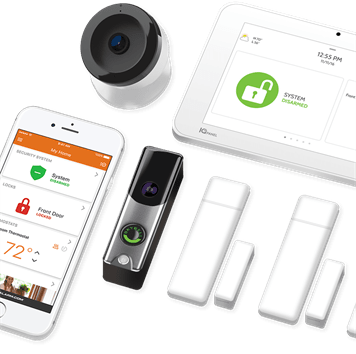
How do Motion Sensors Work?
How Do Motion Sensors Work?Although they play an essential role in home security, the function of motion sensors is widely misunderstood. As a result, many Texans hold misconceptions about their oversensitivity causing false alarms or their being vulnerable to subversion from devious intruders.
In reality, motion sensors are highly effective at helping homeowners protect their property, possessions and family from burglaries, crimes that the FBI reports occur in the United States every 15 to 20 seconds. And with Texas experiencing a property crime rate 6.9 percent higher than the rest of the county, it’s an issue Lone Star state residents can’t afford to ignore.
To dispel any misconceptions and highlight their importance, here’s a look at how motion sensors work and the full range of benefits these devices offer consumers concerned about home security.
Passive Infrared Sensor Technology
The most common type of motion sensor technology utilized in home security systems is known as passive infrared (PIR). These differ from the kind of motion sensors which are used in supermarket doors. Those doors use what’s called active motion sensors that continuously emit ultrasonic sound waves to detect motion.
Conversely, more precise PIR sensors detect the infrared energy given off by people and animals rather than emitting energy or sound themselves. It should be noted that PIR technology is not sensitive to changes in the ambient temperature. And it won’t be triggered by rain, snow or a strong gust of wind either.
A PIR sensor will only go off if it detects an infrared omission within its defined monitoring area of between 180 and 360 degrees. For this reason, and to maximize the sensor’s effectiveness, it should be mounted between six and seven feet above the ground.
PIR motion sensors can easily be wired into a home’s electrical systems. Once triggered, the PIR sensor which is attached to a printed circuit board would interpret and transmit an alert to the control panel of the alarm system.
Upon being triggered, the alarm system will go off and a siren will sound. If an owner doesn’t deactivate their alarm within 10 seconds, they receive a monitor call from Smith Thompson Home Security’slocally based, 24/7 Dispatch Center. Movement detectors can also be connected to a lighting fixture that will activate as soon as the sensor is triggered.
The Power of Wireless Monitoring
With today’s modern security systems, PIR motions sensors can also be set up wirelessly. A trusted security solution will utilize state-of-the-art equipment that doesn’t require a landline to function. Instead, using wireless sensors, a receiver module and a dedicated 4G LTE cellular wireless transmitter, a home or small business can be secured against unauthorized intrusion — even in the event of a natural or intentional power outage. Moreover, wireless monitoring also allows an added degree of protection via a glass break sensor that detects the frequency at which glasses shattered.
Wireless motion sensors can also be integrated into a home automation system that provides remote access to in/outdoor security cameras, thermostats, lights, locks, garage door controls and various small appliances.
Here at Smith Thompson Home Security, we offer the latest motion sensor technology and interactive wireless monitoring packages that give owners the ability to arm and disarm their systems via a secure smartphone app. We’ve been protecting homes and businesses in the Dallas-Fort Worth Metroplex and across the state of Texas since 1978. We remain locally owned and operated, and our no-contract monitoring rates remain as affordable today as they did 40 years ago. If you’re interested in learning more about how to use motion sensors to offer both your family and your private property better protection, contact one of our experts today. We look forward to helping you feel more safe and secure in your home.












